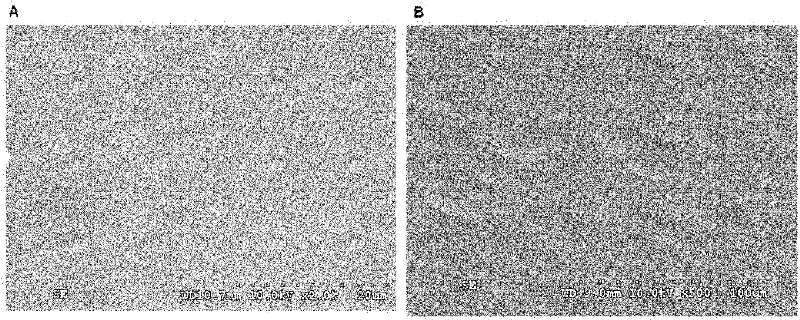Perfluoro acid substance high-sensitivity detecting method assisted by organic proton alkali matrix
A matrix-assisted laser and perfluorinated acid technology, which is applied in the field of analytical chemical detection, can solve the problems of affecting the detection of small molecule targets, contamination of mass spectrometry equipment, matrix shedding, etc., and achieves the effects of convenient detection, high sensitivity and simple operation.
- Summary
- Abstract
- Description
- Claims
- Application Information
AI Technical Summary
Problems solved by technology
Method used
Image
Examples
Embodiment 1
[0027] Embodiment 1, detection perfluorooctane sulfonic acid
[0028] Make 1,8-bis(tetramethylguanidinyl)naphthalene (TMGN) into a 100mmol / mL methanol matrix solution, and mix it with an environmental sample solution containing 1ng / mL perfluorooctanesulfonic acid (PFOS) in equimolar amounts , vortex, centrifuge, take 1 μL of the mixed solution to spot the target, dry at room temperature, put the MALDI stainless steel target with the sample into the MALDI-TOF-MS mass spectrometer for mass spectrometry analysis. Mass spectrometry results such as image 3 As shown in A, the results show that only the negatively charged ion peak (m / z 499.24) of PFOS deprotonation is formed when detected in the negative ion mode of mass spectrometry, and no matrix interference ions appear in the low mass region.
Embodiment 2
[0029] Example 2, detection of perfluorooctanoic acid
[0030] Prepare 1,8-bis(tetramethylguanidinyl)naphthalene as a 100mmol / mL methanol matrix solution, mix with an environmental sample solution containing 20ng / mL perfluorooctanoic acid (PFOA) in equimolar amounts, vortex, centrifuge, and take Spot the target with 1 μL of the mixed solution, dry it at room temperature, put the MALDI stainless steel target with the sample into the MALDI-TOF-MS mass spectrometer for mass spectrometry analysis. Mass spectrometry results such as image 3 As shown in B, the results show that only the negatively charged ion peak (m / z 413.56) of PFOA deprotonation, the decarboxylation ion peak (m / z 369.47) and the removal of 2 F radicals are formed when detected in the negative ion mode of mass spectrometry The decarboxylated ion (m / z 331.42), and no matrix interference ions appeared in the low mass region.
Embodiment 3
[0031] Embodiment 3, detect perfluoromethyl phosphoric acid
[0032] Prepare 1,8-bis(tetramethylguanidinyl)naphthalene as a 100mmol / mL methanol matrix solution, mix with an environmental sample solution containing 20ng / mL perfluoromethylphosphoric acid (PFMPA) in equimolar amounts, and vortex , centrifuge, take 1 μL of the mixed solution to spot the target, dry at room temperature, put the MALDI stainless steel target with the sample into the MALDI-TOF-MS mass spectrometer for mass spectrometry analysis. Mass spectrometry results such as image 3 As shown in C, the results show that only PFMPA deprotonated negatively charged ion peaks (m / z 149.50) are formed when detected in the negative ion mode of mass spectrometry, and no matrix interference ions appear in the low mass region.
PUM
| Property | Measurement | Unit |
|---|---|---|
| molecular weight | aaaaa | aaaaa |
Abstract
Description
Claims
Application Information
 Login to View More
Login to View More - R&D
- Intellectual Property
- Life Sciences
- Materials
- Tech Scout
- Unparalleled Data Quality
- Higher Quality Content
- 60% Fewer Hallucinations
Browse by: Latest US Patents, China's latest patents, Technical Efficacy Thesaurus, Application Domain, Technology Topic, Popular Technical Reports.
© 2025 PatSnap. All rights reserved.Legal|Privacy policy|Modern Slavery Act Transparency Statement|Sitemap|About US| Contact US: help@patsnap.com



